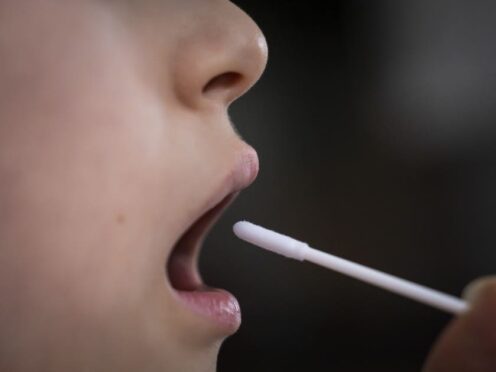Care workers experienced “fear” and “pressure” in their jobs during the pandemic, an inquiry has heard amid criticism over the failure to treat the virus as an occupational hazard.
Representatives from the charity Scottish Hazards, which offers advice to staff on health and safety, told the Scottish Covid-19 Inquiry on Wednesday that not one person raised a grievance which required its assistance during the pandemic, saying that was possibly out of “fear” to assert their rights.
The inquiry heard many care sector workers felt “pressured to go into work even if they were unwell”.
Kathleen Jenkins, secretary of Scottish Hazards, called for a care sector equivalent to the NHS to be created.
She said the pandemic was not classified as “occupational health” by the UK Government and Health and Safety Executive, but the view of Scottish Hazards was that it was a workplace emergency as well as a public health crisis.
The inquiry heard social care work is primarily carried out by low-income female workers, who are typically older, and often on zero-hours or “precarious” contracts.
Ms Jenkins added: “Those in the care sector felt particular pressure to work even if they were unwell.
“I think Scottish Hazards would say we need a root and branch look at how social care is provided and would argue for a parallel system very much like the NHS, we would argue a not-for-profit system that would be mainly public service, with reasonable pay and conditions for its workers.
“We would think the private sector should be reduced and it should be a public service providing care in a much more joined up way.
“The service needs to be preventative and at the moment it’s a crisis service, we don’t have anything for people with moderate needs.”
She also criticised a “lack of precautionary principle” to recognise the possibility that the virus could be airborne, and said the UK Government messaging along with the Health and Safety Executive’s presented the virus as being a “community” concern.
Ms Jenkins said: “I said right at the beginning we should treat this as an airborne disease. There was a lot of opinion and national and international level that this wasn’t an airborne disease.
Day 42 of the Inquiry's Health and Social Care Impact Hearings begins today at 9.45am.
We will hear evidence from @ScottishHazards, @CircleScot and @GMB_union (@GMBScotOrg).
More information and broadcasts are available on the Inquiry's website:https://t.co/1JmnhrS0I5 pic.twitter.com/bX1NiZab2F
— Scottish COVID-19 Inquiry (@covidinquirysco) May 1, 2024
“The message was ‘this is not an occupational matter, it’s a community matter’. We now know that it was, but at the time, I think the UK Government and Health and Safety Executive were consistently saying ‘it’s not an occupational health matter it’s a public health matter’.
“We now know that health and social care workers, transport workers, did contract it through the workplace.”
Ian Tasker, chief executive of Scottish Hazards, told the inquiry it became apparent the main issues during the pandemic were that workers were afraid to raise concerns about health and safety.
Mr Tasker said: “People were afraid to go down a grievance process, if an individual felt concerned about raising a grievance, we would have provided representation.
“Not once did we provide representation at a grievance process.”
Mr Tasker added: “We would agree that business continuity is vitally important, but if the demand impacts on health and safety of people employed at that organisation, there was a fine balance between continuity and protecting health and safety of workers.”
He added that statutory sick pay is insufficient to live off.
The inquiry later heard from Karen Leonard, a GMB Scotland organiser in NHS Scotland.
She said the lowest paid workers in NHS Scotland were placed at more risk than doctors and nurses during the pandemic.
The union official said many domestic staff, catering workers and porters felt abandoned in the first weeks and months of the pandemic.
She said they were not offered the same personal protective equipment as clinicians and initial risk assessments did not consider their roles and how to keep them safe.
Ms Leonard also told the inquiry guidance meant to better protect frontline workers from infection often did not reach them because they did not have access to emails at work and managers were working from home in the first weeks of the pandemic.
In her statement to the inquiry, she said: “The observation was that the higher up the NHS banding you were, the less likely you were to be at the hospital.
“The impact was that staff felt more vulnerable and unsupported.”
The inquiry continues.
